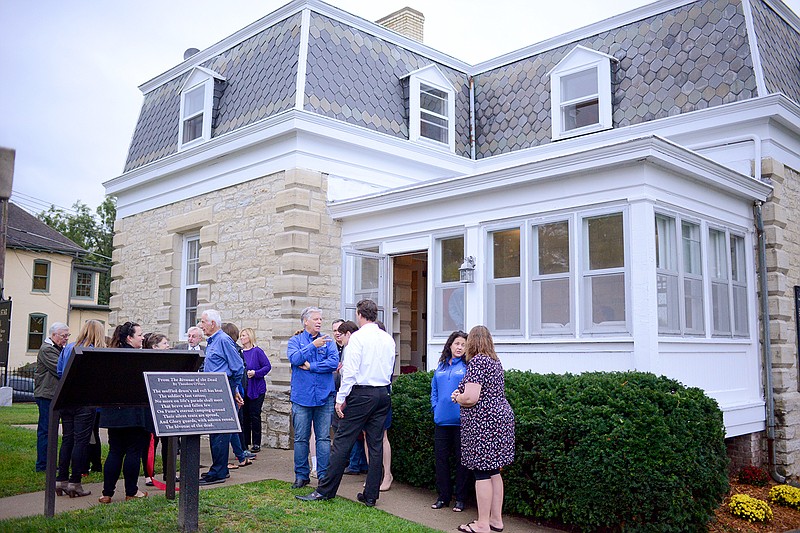Stephen Rosner was a small child when his parents moved to Jefferson City in 1948.
Bess and Walter Gardner were among the first people they met. Walter Gardner, a World War II veteran, was also the caretaker at Jefferson National Cemetery.
The Gardners essentially adopted Rosner into his second family. He even stayed with the couple, who had no children of their own when he was as young as 7 or 8. By then, the cottage where they lived was nearly 80 years old and frightening to the young child.
Rosner, on Thursday, entered the caretaker's cottage at the cemetery for the first time in about 55 years.
He and his wife were among about 40 people who took self-guided tours of the newly-refurbished home.
The Historic City of Jefferson - a nonprofit organization that strives to preserve the Capital City's history, including historic buildings - in 2016 learned the cottage, which was built in 1870, was about to be torn down. The group delayed the destruction and entered two years of negotiations with the U.S. Department of Veterans Affairs, HCJ Executive Director Anne Green said.
Through the negotiations the two reached a unique partnership in which the federal department allowed the nonprofit to pay for the repairs and create a place that veterans may use. The agreement allows HCJ to lease the house free of charge for five years, with continued one-year leases for five after the initial lease runs out.
HCJ plans to let veteran organizations "lease" the cottage as office space - and asks that they only pay utilities and insurance, Green said.
HCJ hosted a ribbon-cutting and open house in front of the cottage early Thursday afternoon, then invited everybody inside for tours, cookies and lemonade.
A local historian provided a lecture after the tours.
Rosner provided his own history.
When he was 14, work was hard to come by, he said. So Walter Gardner offered him a job digging graves in the cemetery.
Veterans' standards required the graves were to be dug very meticulously, Gardner said.
"I thought I was in high cotton," he said. "They paid me 80 cents a day."
And when work was done, Rosner could take a break and swing in Gardner's hammock, which was stretched between two large trees in front of the cottage.
The old trees are long gone.
The Second Empire-style cottage - meaning it was built in the popular style of the Second French Empire, which was during the regime of Napoleon III - features a mansard roof, which has sloping sides that each become steeper halfway down.
It's one of 18 similar cottages at national cemeteries that Brig. Gen. Montgomery Cunningham Meigs developed shortly after the Civil War.
It is hoped that other national cemeteries take up the model used in Jefferson City and use a public/private partnership to preserve the cottages, Green said.
Before HCJ stepped in, the building had been neglected for years.
It had been vacant for several years, since lightning struck the flagpole outside and caused damage to the house, Green said.
HCJ spent $20,000 on the renovations. And volunteers worked more than 1,000 hours repairing the cottage. The Veterans Administration installed a heating, ventilation and air-conditioning system.
"This was a great opportunity to save this building and help other nonprofits," Green said. "We're excited about the chance to save other buildings. This one was in pretty good condition."
In the 1930s, it had been renovated using Works Progress Administration money, Green said. President Franklin D. Roosevelt created WPA as an employment and infrastructure program during the Great Depression. Over eight years, it put roughly 8.5 million Americans to work.
Rosner walked into the house and looked around. He climbed to the second-story bedrooms, where he said he remembered sleeping.
And, he went to the basement, where he played with toys as a small boy.

